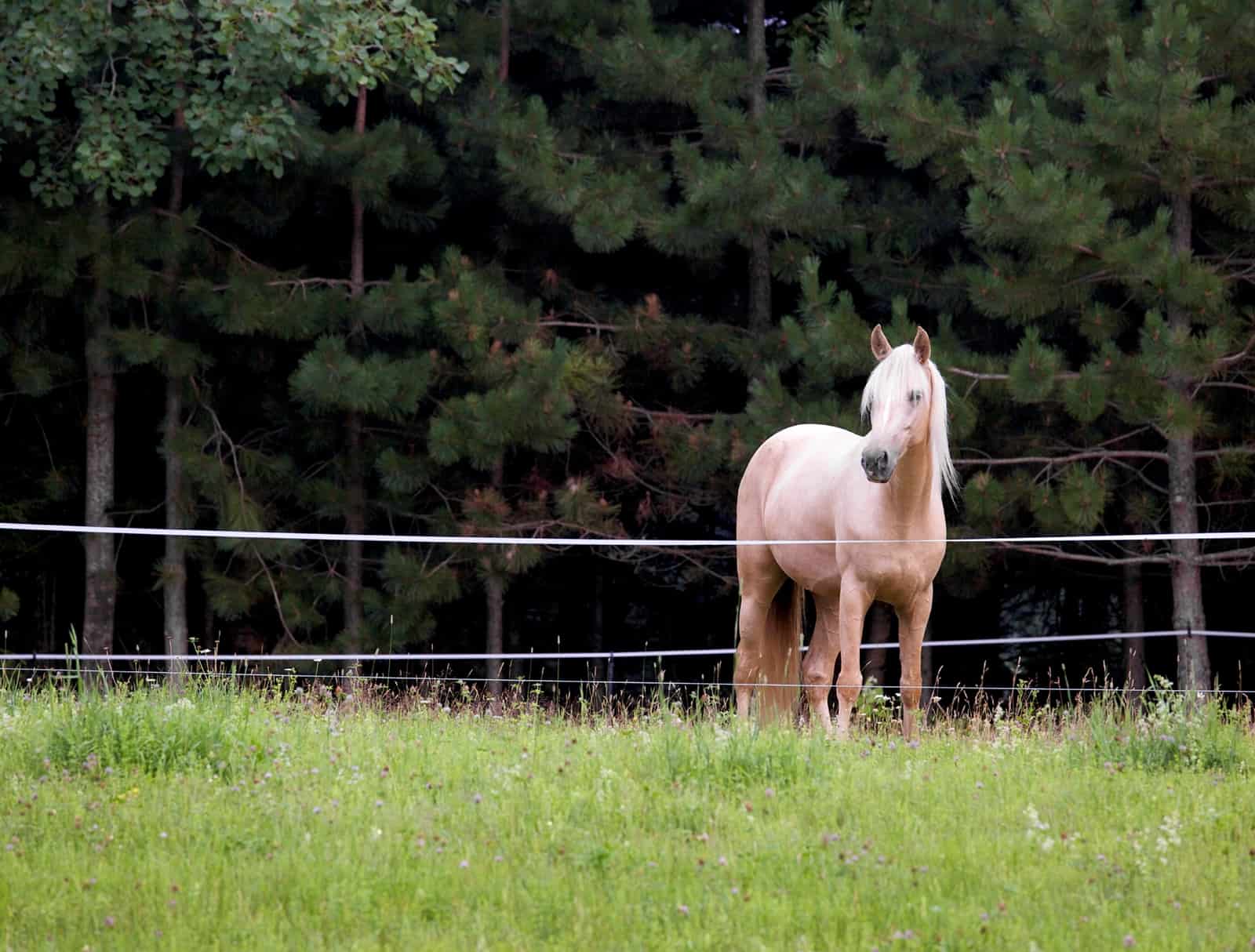Using Electric Fence to Improve Pastures

The key to successful electric fence use is proper installation and maintenance. When used properly, temporary electric fence is a safe and economical way for managers to encourage horses to utilize more of the available pastures. This reduces the need for stored forages such as hay, increases the farm’s profitability, and reduces the operation’s environmental impacts on the surrounding areas.
Benefits to Pastures
Horses are known as spot-grazers. They return to the same areas to graze and will leave other areas of pastures untouched. Grasses are more succulent in a short, leafy stage compared to the more mature, taller grasses nearby. Horses might also prefer one area of a pasture because it is closer to the gate, water, shade, or horses in a neighboring pasture. Heavily grazed areas will begin to deteriorate over time; you’ll see large patches of weeds or bare soil where healthy grasses were once plentiful. Weeds can greatly reduce pasture productivity and quality; bare soil is likely to wash out during wet periods and might take with it nutrients or pesticides that will end up in surface and ground water. Often you can control spot-grazing by strategically setting up a temporary electric fence.
Installing electric fence in large pastures allows horse owners or farm managers to subdivide the pasture in a low-cost, temporary way. Subdividing allows for rotational grazing. While rotational grazing is often thought to be very complicated, it can be as simple as rotating horses from one side of the fence back to the other. Allow horses to graze one section of the pasture until the average pasture height is about 3-4 inches and then rotate them to another section. Clip or mow the recently grazed pastures to 3 inches to even out patches of undergrazed grass with more heavily grazed areas. Return horses to this section after they have grazed down other areas to 3 inches or regrowth has reached 6-7 inches. Rotation timing depends on grass species present, pasture size, number of horses, and weather conditions, but it will often be around 21 days on cool-season pastures in the spring and 28-35 days during the summer months
Create a free account with TheHorse.com to view this content.
TheHorse.com is home to thousands of free articles about horse health care. In order to access some of our exclusive free content, you must be signed into TheHorse.com.
Start your free account today!
Already have an account?
and continue reading.
Written by:
University of Kentucky College of Agriculture, Food, and Environment
Related Articles
Stay on top of the most recent Horse Health news with















